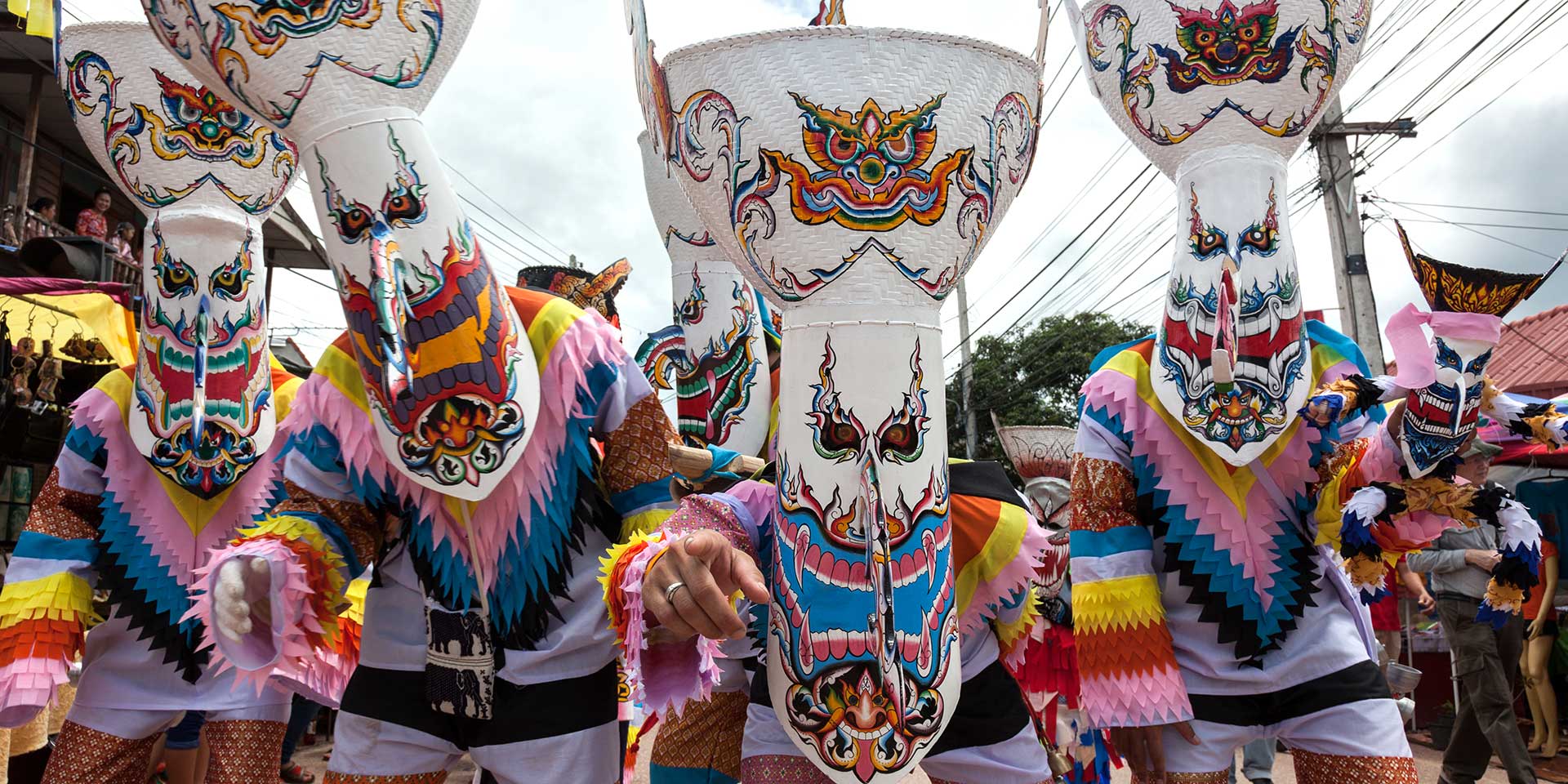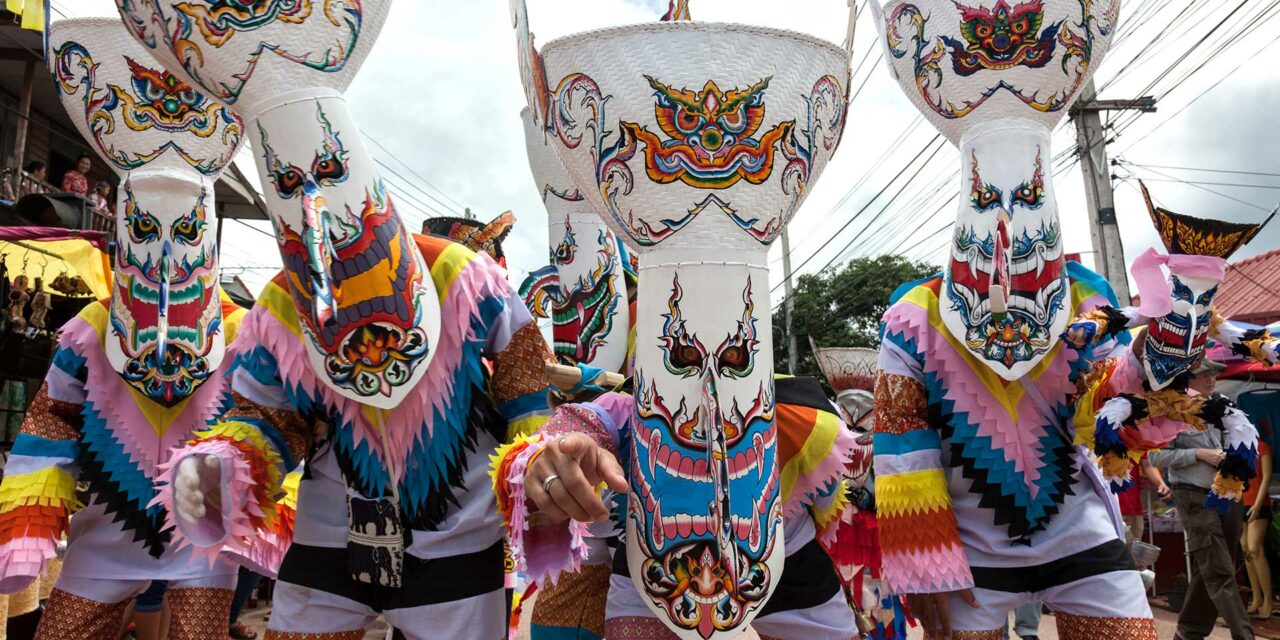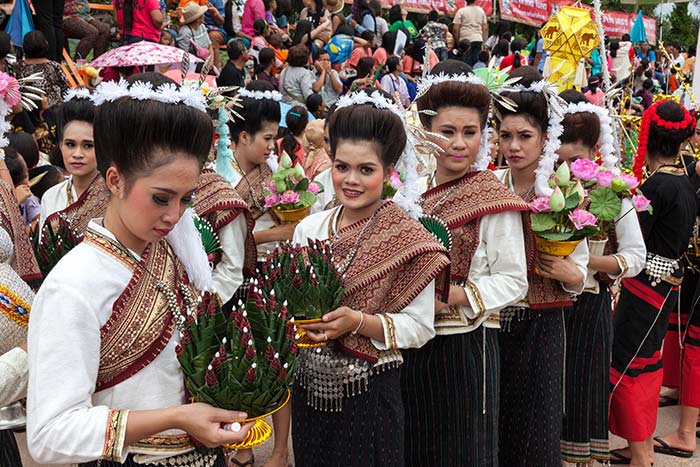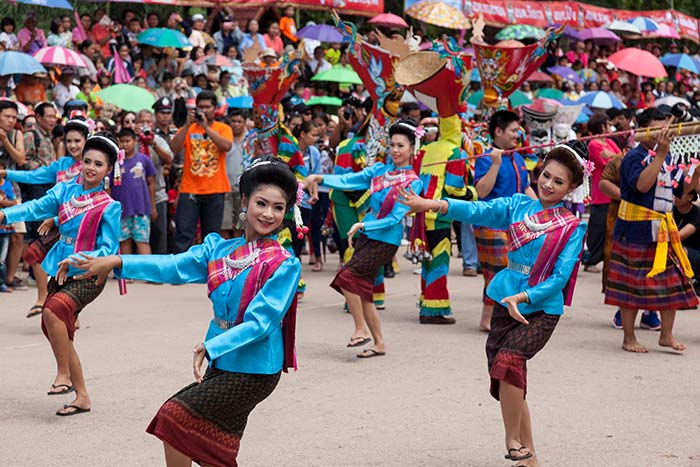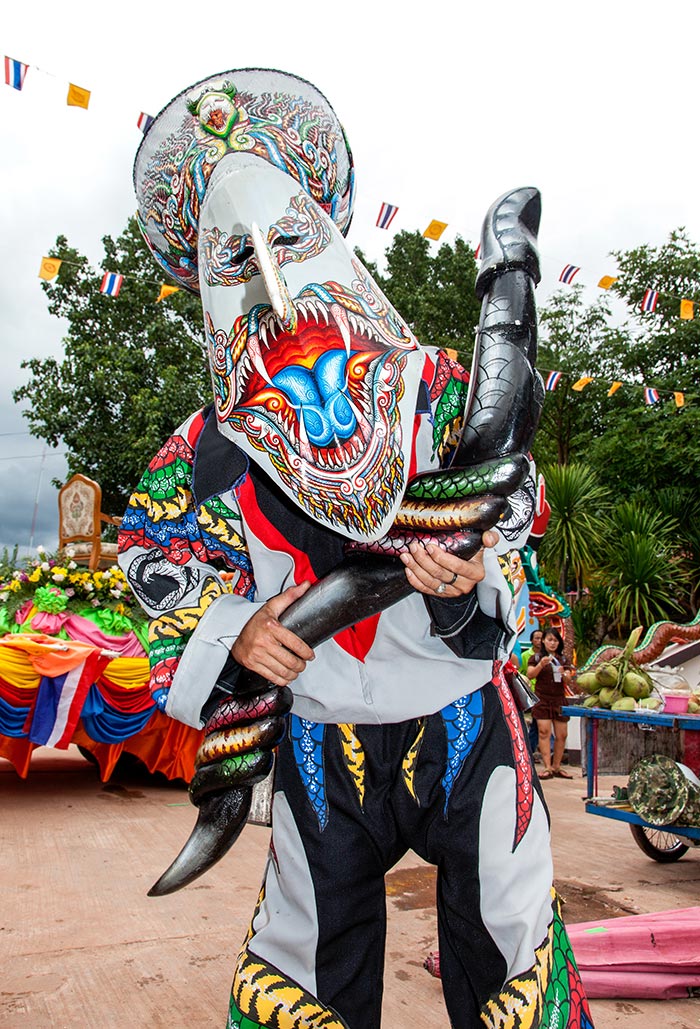Along, long time ago, it is said, Prince Vessantara (Buddha in his past life) made a long journey. Indeed, he was gone for so long, that all of his followers presumed him dead. Yet, one day, he returned – alive and well. His followers rejoiced, and the celebrations that took place were so raucous that they are said to have woken the dead.
ABOVE: Pi Ta Khon “Ghost Festival” in Loei, Thailand.
The celebrations have continued through time, and have evolved into one of the most fun of Thailand’s festivals, part of a larger Buddhist merit-making festival called Bun Pawet. Festival-goers dress up in ghost masks (the literal translation of the festival’s name), and parade and party through the streets of Dan Sai district, in the newly-trendy Loei province. The masks, as you can see from the photos, are a sight to behold, and pretty darn scary. They are long, white, and have big noses. Made from dried sticky husks, and skillfully hand-painted with vibrant colors, these masks are unique to this festival.
The three-day festival dates change yearly, though are always in June, with most of the action taking place on the first day. This is when the townspeople get really rowdy in an effort to wake the spirit of the Mun River, Phra UPhakut, to protect them. The day involves games, concerts, and parades, many locals – of course – dancing around the streets sporting their scary khon mask costumes while clanging cowbells, announcing the presence of the spirits.
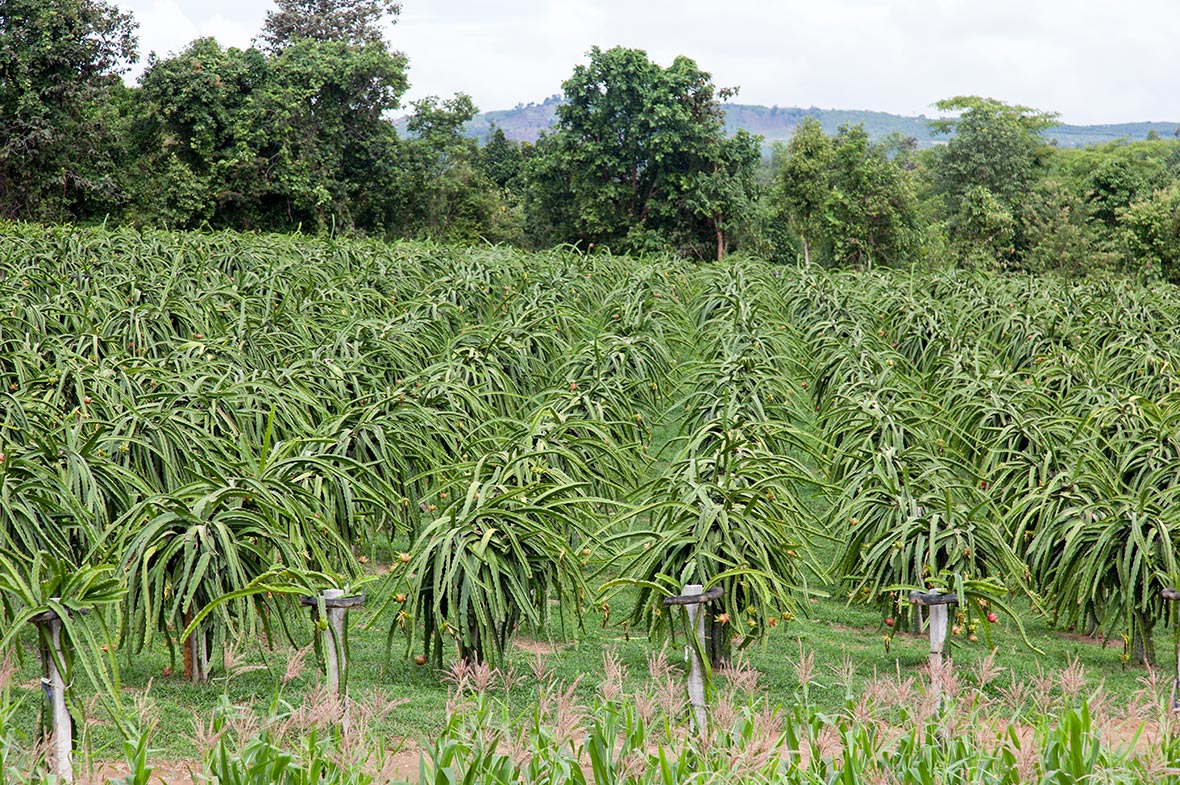
ABOVE: Loei is full of fruit plantations growing mangos, longan, and dragon fruit.
I’ve always considered Loei province, in the Northeast of Thailand (Isaan) near the Laos border, a land far, far away. When I decided to check out the festival, I knew that the best way to get there was by private car, as it’s convenient to have your own mode of transportation in these more remote parts of Thailand. To my surprise, the drive was not only shorter than expected, at just five hours, but also quite pleasant.
ABOVE: It is popular with Thai tourists – particularly Chiang Khan.
Loei province is sparsely-populated, with rolling hills, stunning scenery, and a cooler climate than Bangkok and other parts of Thailand. It is popular with Thai tourists – particularly Chiang Khan, which is reminiscent of Pai – who enjoy navigating the narrow streets on bicycles and reminiscing about the way things used to be. So few foreign tourists visit the area that Loei provides a glimpse of what Thailand must have been like before the big tourism boom hit.
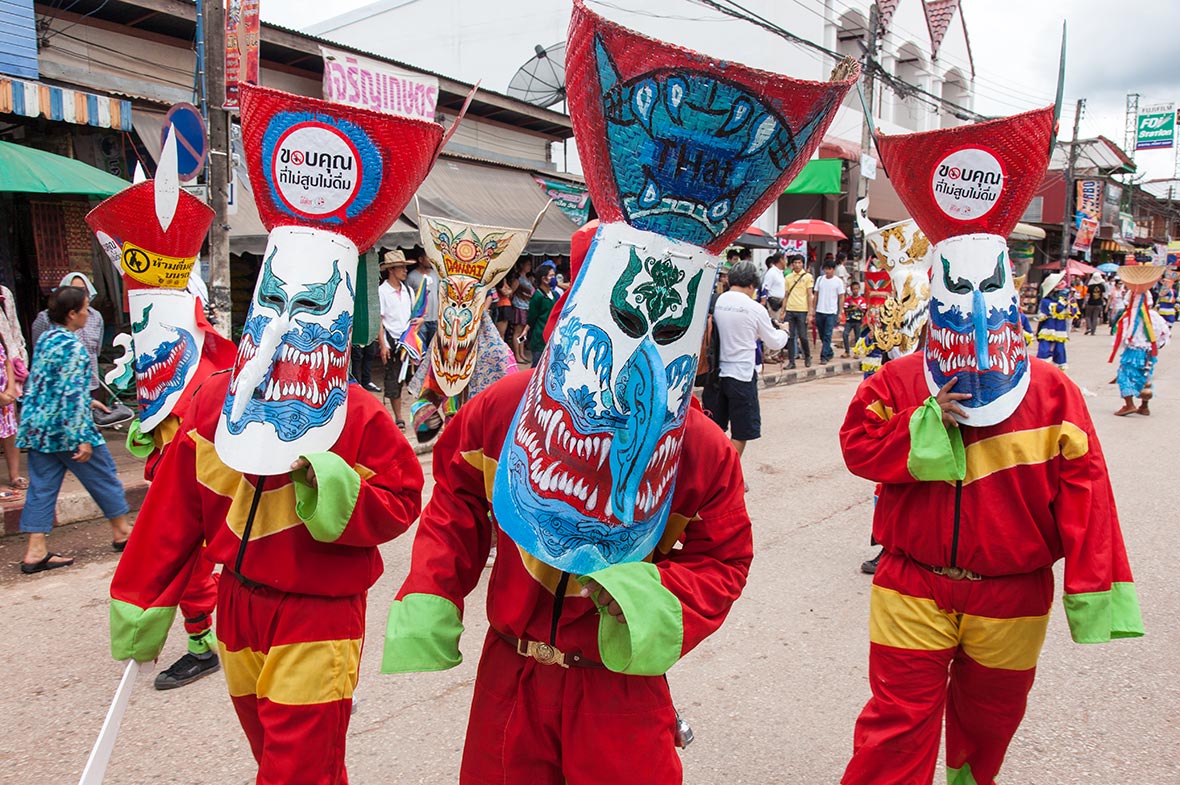
ABOVE: Men dressed as ghosts can be seen everywhere.
My resort – half an hour outside of Dan Sai – was situated on a huge plantation. The view from my window, full of natural, green scenery, was a huge contrast to what I was used to in Bangkok. Still, I didn’t spend long getting settled in – there were more important things on my mind, like taking in the start of Phi Ta Khon festival. When I arrived, the town was already busy. The masked men I’d only seen in photos suddenly presented themselves before me in person – if you can call them “people” when they’re dressed as ghosts – dancing through the town’s center and at temples to the tune of Isaan music. Many of these men were visibly inebriated (alcohol plays a huge role in these types of festivals), so it wasn’t much of a surprise when I witnessed a fight break out between two opposing masked groups.
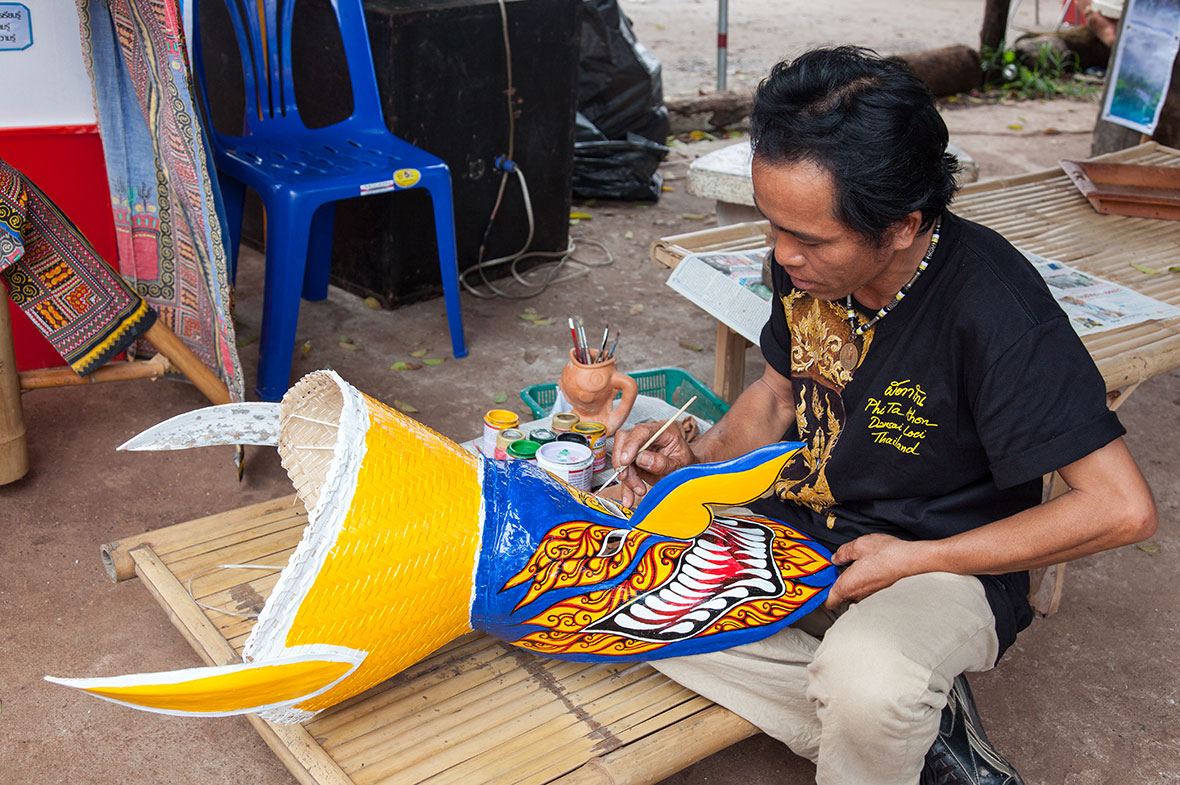
ABOVE: An artist painting a ghost mask
I saw an artist painting the masks, who told me that in the old days, they were floated in the river and recreated each year for the festival. Looking up from his talented craftsmanship, several groups in some kind of dance competition caught my eye.
The next morning was the main event, and I made sure to get there bright and early for it. Of course, like most Thai festivals, it began with the obligatory speeches delivered by the town’s mayor and other such officials. After this, dancing broke out – some traditional, some not, followed by a long parade with floats, beauty pageant winners, and men covered in black mud that wound its way through Dan Sai’s streets. The parade included the masked men – of course – as well as a variety of colorful costumes.
ABOVE: A participant playing air guitar with a huge phallus.
One interesting aspect about Phi Ta Khon festival is its sexual undertones. Each and every one of the masked ghosts was grasping an enormous phallus, parading and dancing through the town while proudly showing them off – particularly to the women. There were sword-shaped phalluses, cannon-shaped phalluses, and I even caught a group of men playing air guitar with them. One man clutched a long stick with two wooden puppets copulating. The ringing cowbells I’d read about, which hung from them men’s waists, could be heard throughout the town, intermingling with the twangy, often high-pitched Isaan music. Together with alcohol that didn’t seem to stop flowing, all this made for a festive mood indeed.
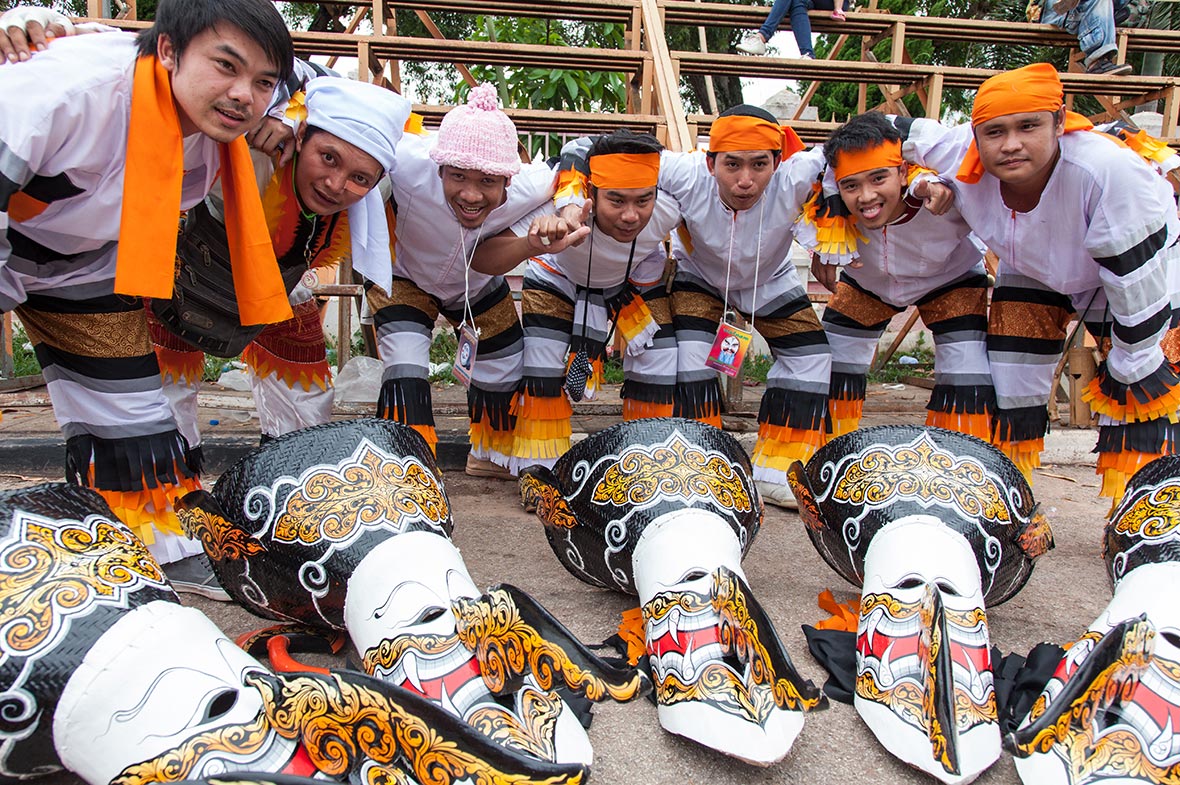
ABOVE: The people of Loei are very friendly, and were happy to pose for photographs.
The locals of Loei are always friendly and welcoming, and were even more so to me during this very special occasion. They were happy to pose for my photos so that I could capture the excitement through my lens.
I headed back to my hotel and returned home the following day, when the villagers – no doubt heavy with hangovers – went to attend Buddhist sermons in their local temples. I have lived in Thailand for a long time, and I must say this was one of the most fun-filled festivals I’ve ever attended. I was thrilled to have had the chance to experience this part-ritual, part-festival, part-party.

